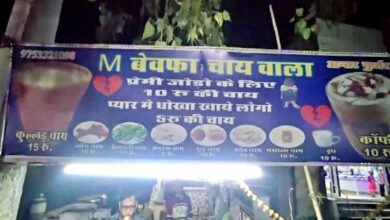Will you feed 140 crores?

Think, technically, India joined the group of two most developed countries in the world and one of the richest countries in the world and when its first meeting was held, what was the decision? When the first virtual meeting of I2U2 i.e. India and Israel and United States of America and United Arab Emirates was held, it has been announced that UAE will invest 16 thousand crore rupees in setting up a food park in India. The first investment decision is the Food Park and is said to be aimed at combating hunger and malnutrition in South Asia, while simultaneously protecting the environment. Clearly, hunger and malnutrition in South Asia have become similar to those of African countries, and the countries of South Asia are becoming the biggest victims of climate change, regardless of its cause.
Needless to say that India is the largest country in South Asia and next year it is going to be the country with the largest population in the world. The population of India has exceeded 140 crores and the provision of food for such a large population is going to be difficult in the coming days. There is no one reason for the food crisis, but there are many reasons. Climate change is one of the reasons and government policies are also the reason. Due to climate change, farmers are facing the brunt of the weather. Earlier also the farmer of India used to do farming with the help of monsoon rains and is doing it even today. Even today, only 49 percent of the cultivable land in India has irrigation system, that too in some way or the other. The remaining 51 per cent of the land is still cultivated due to southwest monsoon rains. This year, the monsoon rains are not happening in Uttar Pradesh and Bihar, so the planting of paddy has stopped. Few farmers have planted paddy, then their fields are burning due to lack of rain and those who have not planted paddy yet, they are puzzled when they will plant now. Meanwhile, farmers’ organizations have already started demanding declaration of drought in both the states. Think, if there is not enough cultivation of paddy in the two big states of the country, then from where will they be fed?
It is not that in the states where it is raining, the conditions are very good for paddy or other Kharif crops. The crops there are flowing in heavy rain. States like Madhya Pradesh, Maharashtra, Gujarat, Telangana etc are receiving many times more rain than expected. This redundancy is due to climate change. Where it is not raining right now, like in Bihar, if farmers plant crops in some way, then when water is released from Nepal side in August and September, there will be floods and the crop will be washed away. The same situation will happen in eastern Uttar Pradesh as well. That is, the entire farming of farmers is dependent on God’s trust or such powers, on which their emphasis is not maintained. The shortage or black marketing of fertilizers and seeds at the time of cultivation is a different crisis, which the farmer has to face. Apart from this, there is a water crisis in the areas which are considered to be irrigated. Irrigation has been done in Punjab and Haryana but the ground water level has gone down drastically due to the use of tube wells. Therefore irrigation is not easy even in irrigated areas.
After this the crisis is of government procurement and export policies. Wheat procurement in India decreased and felt that there could be a crisis ahead, then India stopped the export of wheat. But it may not happen all the time. India has procured 187 lakh tonnes of wheat this year, which is 53 per cent less than last year. That is, this year less than half of the wheat that the government had bought last time. This happened because private traders bought and exported very aggressively. Between the war between Russia and Ukraine, the situation in the world has become such that the demand for wheat from India has increased a lot. Such international conditions are to persist and hence private procurement will increase even as the system of government procurement continues. When the government was able to buy less wheat this year, it was said that rice would be given instead of wheat in Bihar, Bengal and many states. Now think, what will happen if the government stops giving five kilos of food grains to 80 crore people after the next election or even earlier? If the entire market of food grains is in the hands of private traders and the government does not provide free ration to two-thirds of the population, then what will be an outcry among 140 crore people can be imagined.
Meanwhile, in order to reduce dependence on imported oil, the government is giving a lot of emphasis on blending of ethanol. Recently, the Prime Minister announced with great pride that India has achieved the target of 10 percent ethanol mixing ahead of time. Keep in mind that the production of ethanol can cause a big grain crisis for India. Many countries of Africa and South America are going through this crisis. If the production of ethanol from cereals or other food items increases, then the food crisis will deepen. The government has to make policies keeping this in mind.






